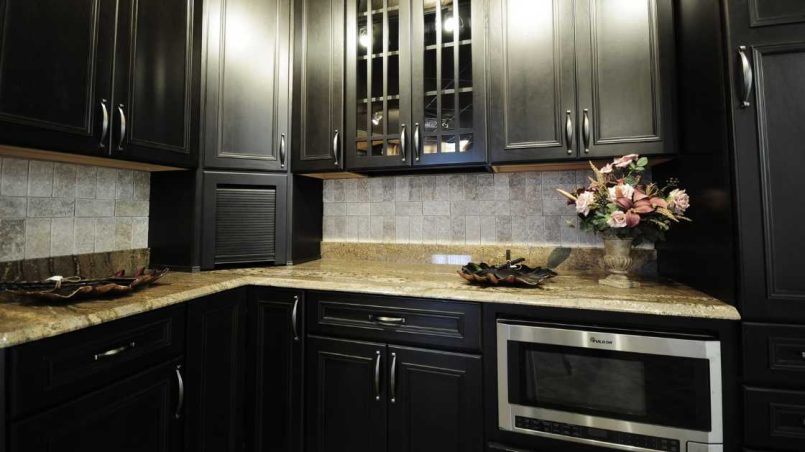Sealing the edges of your kitchen cabinets is an important step in protecting them from damage and ensuring they look great for years to come. This guide will walk you through the answer of how to seal kitchen cabinet edges, from preparing the surfaces to applying the sealant.
Materials Needed
Before you begin, you will need to gather the following materials:
- Sandpaper (coarse and fine grit)
- Tack cloth or a damp rag
- Cabinet and trim paint or sealant
- Paintbrush or roller
- Masking tape (if needed)
Preparing the Surfaces
The first step in sealing kitchen cabinet edges is to prepare the surfaces. This includes cleaning the edges of your cabinets and removing any old paint or sealant. Use coarse grit sandpaper to remove any rough or uneven surfaces, then switch to fine grit sandpaper to smooth out the edges. Once you’ve finished sanding, wipe down the edges with a tack cloth or damp rag to remove any dust or debris.
Applying the Sealant
Now that the surfaces are clean and smooth, it’s time to apply the sealant. If you’re using cabinet and trim paint, use a paintbrush or roller to apply a thin, even coat to the edges of your cabinets. If you’re using a sealant, follow the manufacturer’s instructions for application. Be sure to apply the sealant in a well-ventilated area and wear gloves to protect your hands.
Curing Time
Once you’ve applied the sealant, it’s important to allow it to cure properly. The curing time will vary depending on the product you’re using and the humidity and temperature of your environment. Follow the manufacturer’s instructions for curing time, and avoid using your cabinets or placing heavy items on them while the sealant is curing.
Final Touches
After the sealant has cured, it’s time for the final touches. If you used masking tape when applying the sealant, carefully remove it to reveal clean, crisp edges. If there are any drips or smudges, use a damp rag to clean them up. Your kitchen cabinets should now be protected and looking great!
How do you seal around kitchen cabinets?
Sealing around kitchen cabinets is an important step in protecting them from damage and ensuring they look great for years to come. Here are the steps to properly seal around kitchen cabinets:
- Clean the area: Start by cleaning the area around the cabinets. Use a degreaser and a scrub brush to remove any dirt, grime, or grease from the walls, floors, and countertops. Make sure to remove any dust or debris from the base of the cabinets as well.
- Mask off the area: Use masking tape and plastic sheeting to mask off the area around the cabinets. This will protect your floors, countertops, and walls from any spills or drips.
- Apply the sealant: Use a paintbrush or roller to apply a thin, even coat of sealant to the base of the cabinets, around the countertops, and on the walls. Make sure to apply the sealant in a well-ventilated area and wear gloves to protect your hands.
- Allow to cure: Allow the sealant to cure properly. The curing time will vary depending on the product you’re using and the humidity and temperature of your environment. Follow the manufacturer’s instructions for curing time, and avoid using the area around the cabinets while the sealant is curing.
- Remove the masking tape: After the sealant has cured, carefully remove the masking tape. If there are any drips or smudges, use a damp rag to clean them up.
- Repeat the process: Repeat this process on the other side of the cabinet, and the other sides of the countertop or wall if necessary.
It’s important to note that the type of sealant used should be appropriate for the surface being sealed. Make sure to read and follow the manufacturer’s instructions when using any sealant, and take the necessary precautions to protect yourself and your home. Also, if you’re not confident in your ability to do the job, consider consulting a professional for help.
How do you fix the edges of kitchen cabinets?
Fixing the edges of kitchen cabinets can be done in a few different ways, depending on the specific issue. Here are a few common methods for repairing kitchen cabinet edges:
- Sanding: If the edges of your cabinets are rough or uneven, sanding them down can help smooth them out. Start with coarse grit sandpaper to remove any roughness, then switch to fine grit sandpaper to achieve a smooth finish.
- Painting or staining: If the edges of your cabinets are discolored or showing signs of wear, repainting or restaining them can give them a fresh new look. Make sure to clean the edges thoroughly before applying a new coat of paint or stain.
- Trim installation: If the edges of your cabinets are chipped or damaged, installing new trim can help cover up the damage and give the cabinets a polished look. This can be done using a variety of materials such as wood, PVC or MDF.
- Edge banding: A common solution for covering the raw edge of plywood or particleboard cabinet is by adding edge banding. Edge banding is a thin strip of material, usually wood veneer, PVC or ABS that is adhered to the edge of the cabinet with a heat gun or iron, then trimmed to size.
It’s important to note that for all repairs, you should use the same materials and finish as the original cabinet to achieve a seamless repair. If you are not sure on how to fix the edges of your kitchen cabinets, consider consulting a professional for help.
Conclusion
Sealing kitchen cabinet edges is an important step in protecting them from damage and ensuring they look great for years to come. By following this comprehensive guide, you can seal your cabinet edges like a pro and enjoy beautiful, protected cabinets in your kitchen. Remember to always read and follow the manufacturer’s instructions when using any sealant or paint, and take the necessary precautions to protect yourself and your home.














